Critter; Battling Floodlights;
D850 DSLR Moon imaging
Posted: 14 September 2018
|
Open: Thursday, 13 September 2018, 1831 MST Temperature: 85°F |
Session: 1278 Conditions: Clear |
Equipment Used:
12" f/8 LX600 w/StarLock
2" 24mm UWA eyepiece
2" 2X Powermate
2" 4X Powermate
Camera:
D850 DSLR
Upon arrival at the observatory I checked the trap I had set out to try to capture the packrat that had been visiting the observatory. Somebody was inside the trap:
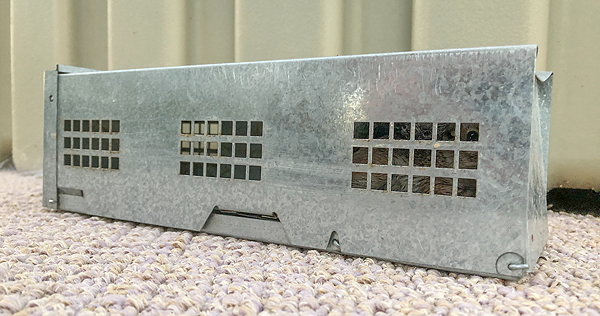
He is at the right; his right eye is visible in the photo. It turned out to not be a packrat that was captured, but an antelope squirrel. I released him.
1836 MST: sunset.
1844 MST: LX600 ON, StarLock OFF, High Precision OFF.
1846 MST: began viewing some planets, 102X. Venus was a nice fat crescent phase, Jupiter had the four Galilean Moons visible, Saturn and its moon Titan were visible, and Mars showed only the bright white South Polar Cap. Then viewed the Moon, 102X.
1903 MST: took this handheld D850 DSLR photo (f/2.8, 1/15sec, ISO 400, FL 70mm) of the Moon with some Earthshine visible, Jupiter (below and left of the Moon), and Venus (lower right corner):
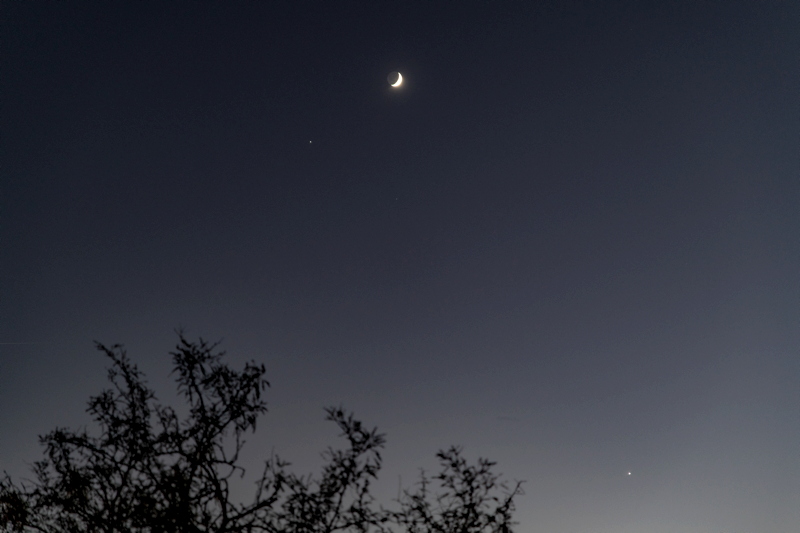
My neighbors to the south and northwest seem to have "battling unshielded floodlights" aimed at the observatory:
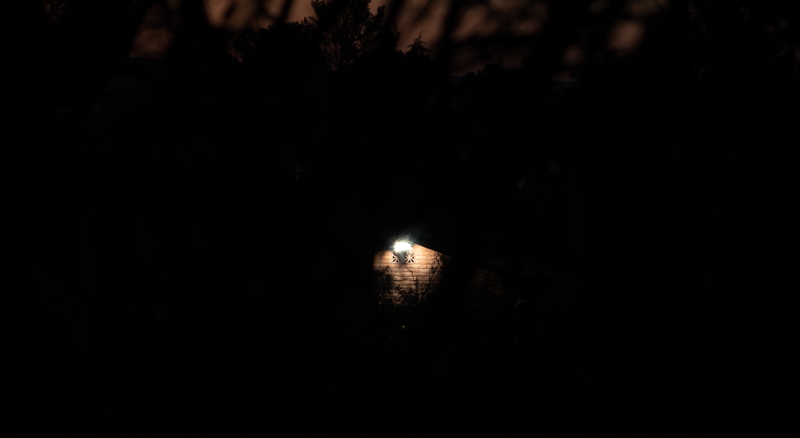
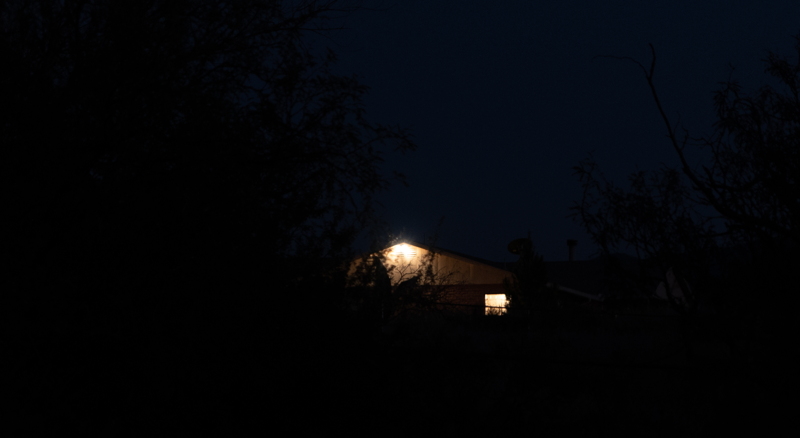
Neither neighbor were able to grasp the concept that their unshielded lights shine unnecessarily beyond their property line. My neighbor to the north has been more understanding about their floodlights and generally leave them off or turn them off when I ask them to. Many thanks to them!
1910 MST: mounted the D850 DSLR at prime focus of the 12" telescope for this photo of the Moon (1/400sec, ISO 800):
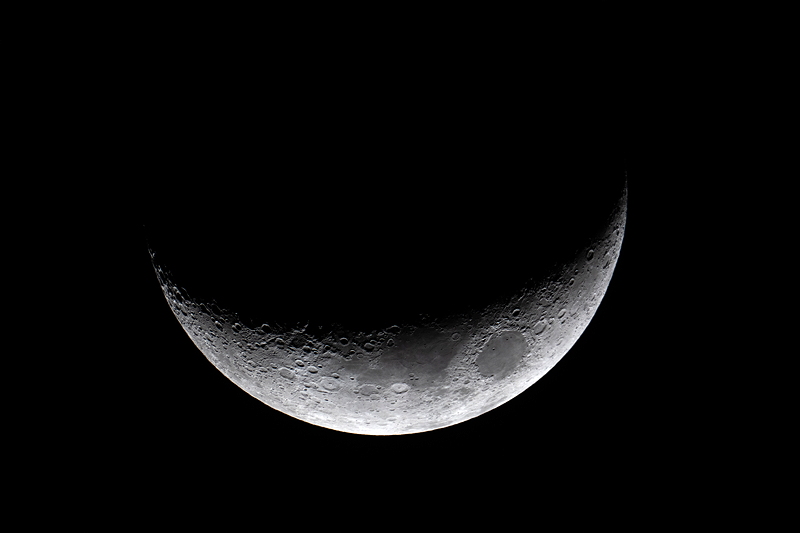
Added the 2" 4X Powermate for these photos of the Moon (1/160sec, ISO 6400):
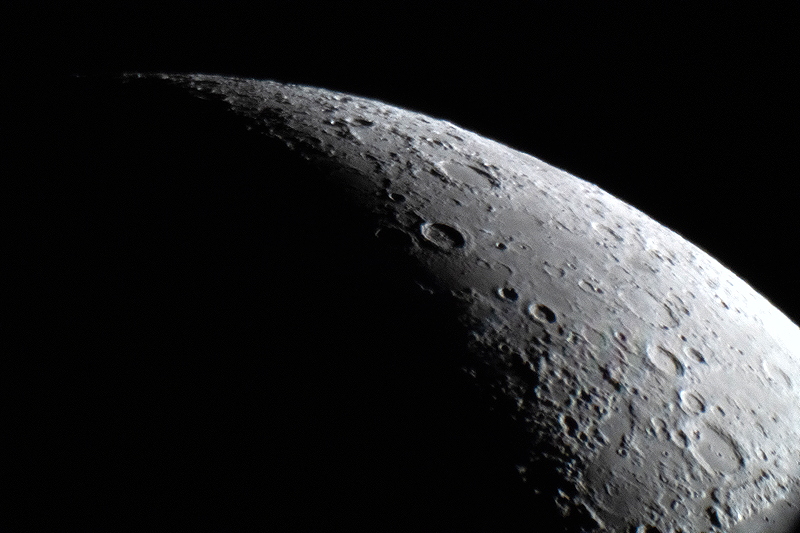
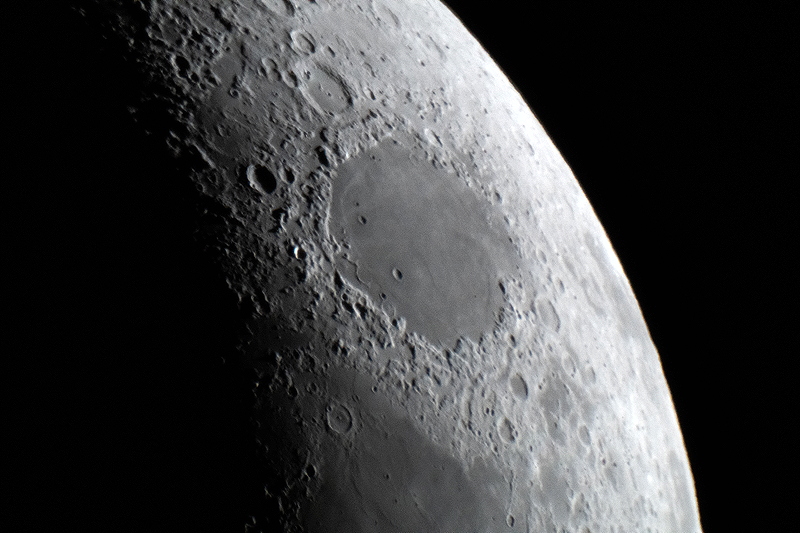
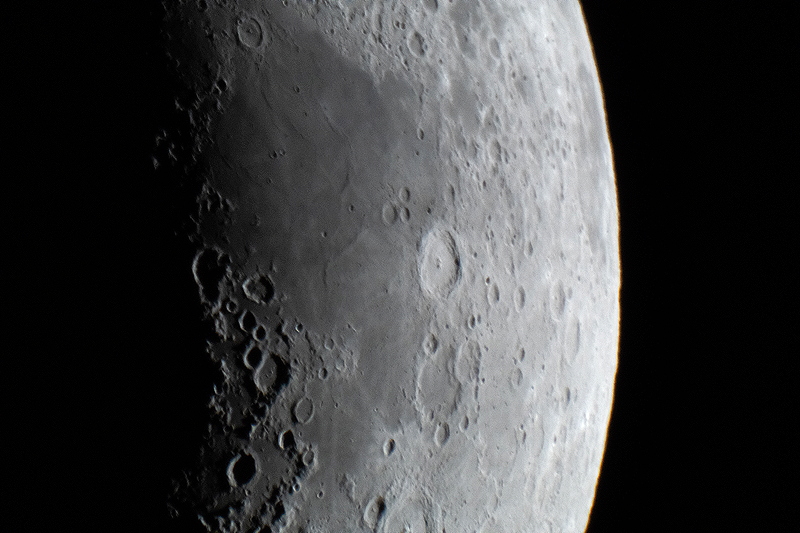
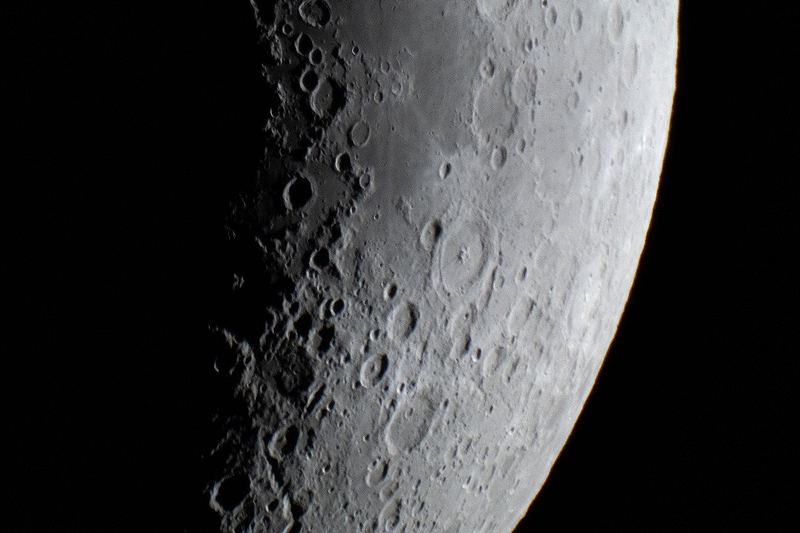
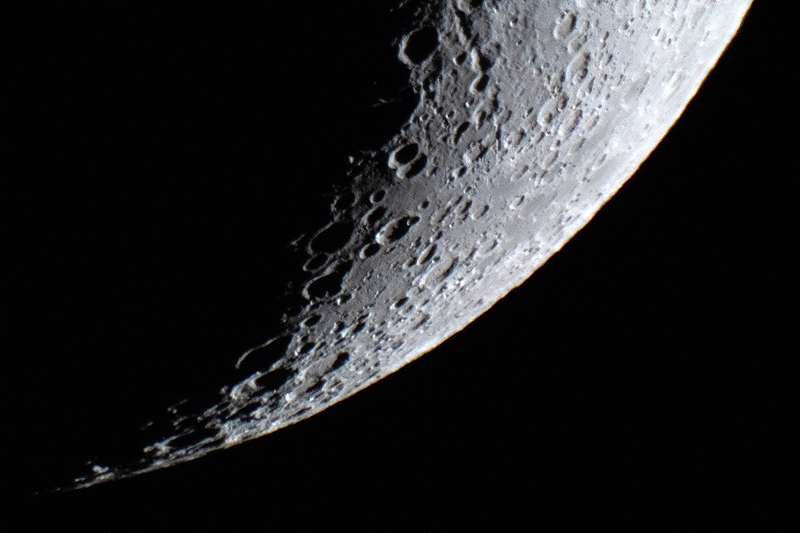
1939 MST: viewed the planetary nebula IC1747, low in the northeastern sky, 102X and 203X. It was small and faint.
2016 MST: mounted the D850 DSLR at prime focus + 4X Powermate, focused on Shedir, locked the mirror, and SYNCed on the star. Focusing was difficult using the Bahtinov Mask due to the high magnification.
2024 MST: High Precision ON, StarLock ON.
I tried imaging IC1747 at this high magnification, StarLock autoguided, 30 seconds, ISO 6400, White Balance 4000K. This cropped image did not turn out very well:
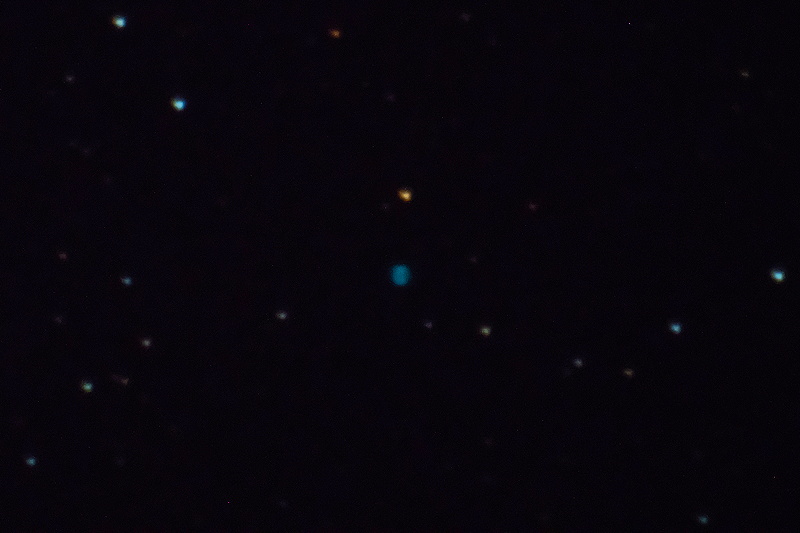
2033 MST: StarLock OFF, High Precision OFF. Removed the camera.
2038 MST: viewed Mars, 102X, 203X, and 406X. The best view was actually at 406X with the bright South Polar Cap being the best feature visible.
2048 MST: LX600 OFF.
|
Close: Thursday, 13 September 2018, 2100 MST Temperature: 77°F |
Session Length: 2h 29m Conditions: Clear |
Comments are welcome using Email. Twitter users can use the button below to tweet this report to their followers. Thanks.
Cassiopeia Observatory Home Page
Copyright ©2018 Michael L. Weasner / mweasner@me.com
URL = http://www.weasner.com/co/Reports/2018/09/14/index.html
